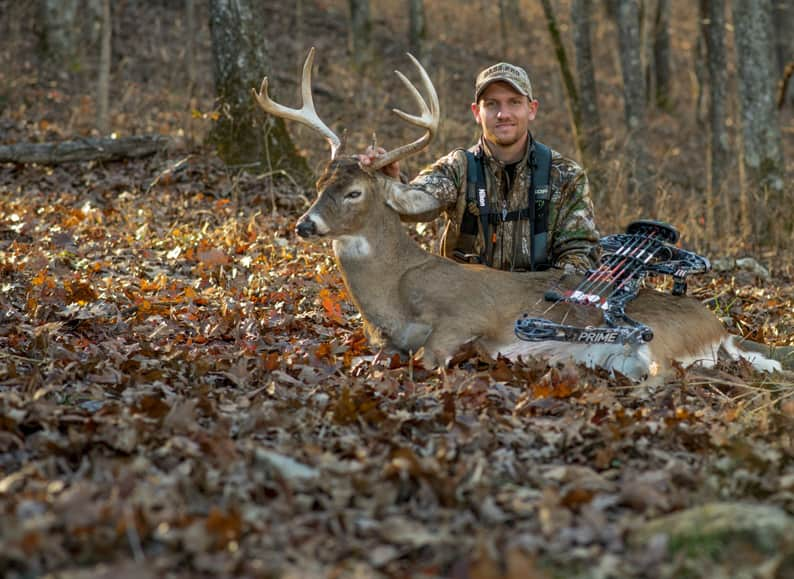Whitetail Wednesday: Scrapes Tell All
Dave Maas 10.12.16

There are a lot of scrapes being worked at my place in Missouri this week! The same is true throughout most of the whitetail’s range. Recently when a cold front passed, one of my Reconyx cameras captured the footage below of a mature buck I call Handy working a scrape.
Scrapes are like old phone booths – they serve as communication posts for the deer herd. They are NOT territorial markers. Deer use scrapes to communicate who is in the neighborhood, along with their status, and/or to check the status of other deer in the area.
Deer use scrapes the most just before most does become receptive to bucks. Once that occurs, bucks aren’t worried about status, and does don’t need to go to a scrape because they are producing enough scent to communicate their status no matter their location.
So, after you see scrapes being actively used, you know the pre-rut is rolling and bucks will likely be more active during daylight hours unless daytime temperatures are way above normal. That stage will last about 2 weeks and then most of the scrapes won’t be visited as much. In fact, you’ll notice leaves covering most of the scrapes. That’s because enough of the does are receptive that bucks leave the scrapes to find those very attractive does.
How can deer hunters use this information to hunt more effectively? I use this information to select stand locations. If most of the scrapes are being kept open, and especially if I have trail cam images of a mature buck using a scrape, I’ll hunt near that scrape.
However, if most scrapes have been open and actively used for more than a week or so, I’ll switch to hunting travel corridors or close to bedding areas where I expect bucks to be cruising in search of receptive does.
Remember, scrapes are much more than potential hunting locations. They are a great indicator of the rut stage. If most scrapes were active a week ago, that tells me just as much about where I should be hunting as when most scrapes are active.
The next time you’re in the woods, pay attention to the condition of the scrapes and then use that information the next time you select the stand location.
Enjoy creation!
Editor’s note: Be sure to check out Dr. Grant Woods and his popular on-demand web series that shares current information about deer hunting and deer management. The free videos focus on what the Growing Deer team of experienced hunters and deer managers are doing in the field week to week, including action-packed hunts, proven hunting strategies, habitat management, food plots, trail camera techniques and the gear it takes to get it all done.

